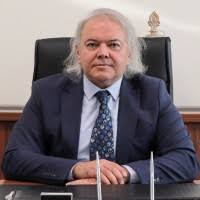
O. Murat Ozkendir
Tarsus University, Turkey
Talk: Absorption Spectroscopy Analysis of Ionic Activity in -NaFeO2 at Varying Temperatures
Abstract:To investigate the effect of heat on the electronic, crystal structure, and ionic conductivity properties of β-NaFeO2 materials, a temperature-dependent ionic activity investigation of the sodium oxide material was performed. To demonstrate the physical background impact of temperature change on material atoms, x-ray absorption (XAS) and x-ray absorption fine structure (XAFS) spectroscopy data were collected and processed at comparable temperatures. Among the materials, sodium atoms were shown to be the most responsible for ionic conductivity loss as temperature increased. When sodium atoms detach from the spinel structure of the Fe-O ligand, their ionic capacitance increases as the temperature rises, resulting in decreased ionic conductivity. Soft x-ray XAS and XAFS studies were carried out to study the temperature-related background process. The XAFS data were collected from the Fe K-edge, whereas the soft x-ray XAS data were obtained from the Fe L3,2-edge and the O K-edge. Corresponding investigations confirmed an exceptionally stable (FeO2)-ligand structure; however, as the temperature rises, sodium atoms become partially free, causing an increase in ionic resistance via Coulombic interactions. The temperature was elevated to 100 °C to investigate how temperature affects the β-NaFeO2 material. This caused a substantial release of sodium atoms, which were determined to be bonded to the ligand as “Na+(FeO2)-” after cooling to create the β-NaFeO2 material.
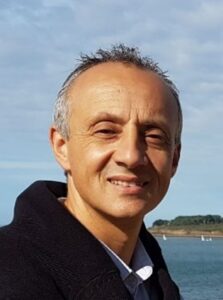
Jean-François Bardeau
Université du Mans, France
Talk Title: Raman detection of analytes in the 10-6 – 10-8 M range: Highlight on commercial SERS substrates and on a low-cost nano-rough gold substrate
Biography: Jean-François BARDEAU est Directeur de Recherche au CNRS à l’Institut des Molécules et Matériaux du Mans (IMMM) de l’Université du Mans. Il s’est spécialisé dans l’étude des propriétés structurales et dynamiques de différentes classes de matériaux dont les matériaux hybrides organique/inorganiques et les biomatériaux (bio-minéralisation de mollusques marins à coquille unique et bivalves, pigments).
Plus récemment, il a orienté une partie de ses recherches sur la compréhension des phénomènes d’exaltations électromagnétiques associés aux systèmes confinés et nanostructurés pour développer des capteurs SERS (surface enhanced. Raman scattering) robustes, fiables et reproductibles en vue d’ applications dans les domaines de la santé et de l’environnement.
Abstract:Surface Enhanced Raman Spectroscopy (SERS) is a powerful non-invasive technique that is increasingly used to detect and identify trace amounts of molecular analytes. One of the major challenges for the quantitative use of SERS remains the reproducible design and fabrication of substrates with topographical features with high enhancement factors arising from a high hotspot density on a large scale. We recently reported an efficient way to fabricate SERS substrates using the thermal evaporation method. In our work, the substrate was made up of a primary layer of evaporated gold of approximately 100 nm and an additional gold layer on top. During the growth process, the surface area covered by the metal increases, and the metal clusters connect with each other to first create irregular shapes with small asperities before forming a continuous film over time. Thus, by optimizing the experimental conditions, the interparticle spacing of the metal nanoparticles on the surface can be controlled to form a long-range connectivity network (percolation threshold), ideal conditions for creating numerous hot spots. However, one question remains open: does the surface quality of the primary layer have an influence on the surface density and the intensity distribution of hot spots and therefore on the SERS enhancement factor of the substrate?
To answer this question, we have numerically created surfaces, composed of gold NPs randomly deposited on a smooth surface, comparable to a Silicon wafer and we studied the effect of the primary layer by adding the “real” surface topography of the layer, recorded by high resolution Atomic Force Microscopy (AFM). Simulations were then carried out using the Finite Element Method (COMSOL Multiphysics ®) to determine the location of hot spots on the surface and elucidate the influence of the primary gold topography on the plasmonic properties. I will also present experimental results obtained by PhotoEmission Electron Microscopy (PEEM) on smooth and rough surface to confirm the numerical results.
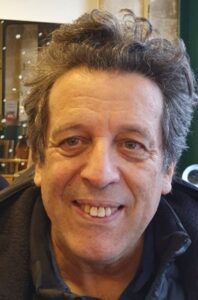 Lotfi Bessais
Lotfi Bessais
University of Paris-Est Creteil, France
Talk Title: Multifunctional Co-based intermetallic alloys
Biography: Lotfi Bessais is a professor at the University of Paris-Est Creteil, France. He obtained a doctorate degree and HDR from the University of Paris 7, France. His research interests cover a broad range including nanomagnetic intermetallic materials.
Abstract: Multifunctional R-Co (R= rare earth) intermetallic alloys exhibit performant magnetic, magnetocaloric and important hydrogenation properties. Samples were prepared by high-energy ball milling followed by an optimized heat treatment.
Structural properties were determined using x-ray powder diffraction, while local environment around each cobalt atom were studied utilizing synchrotron beam local probes. Magnetic and magnetocaloric measurements were performed using a Quantum Design magnetometer.
Ab initio FP-LAPW calculations combining density functional theory and the full-potential linearized augmented plane wave method are performed to investigate the electronic and magnetic structure of the Co-based intermetallic alloys. The calculated magnetic moments are in good agreement with the experimental measurements.
The maximum hydrogen absorption content of R-Co reached 1.2 H/M (H/M: hydrogen per metal). High coercivity of 1.7 T are obtained for theses alloys after an optimization of their microstructure. In addition, these uniaxial anisotropic compounds exhibit a large magnetic entropy change at Curie temperature with a magnetocaloric effect equal to 6 J/(kg.K) under low magnetic field of 0-1T. These results indicate that, these nanomaterials are suitable for hydrogen storage, permanent magnet applications and for magnetic refrigeration.
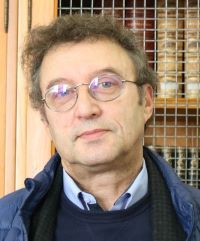
Rui Fausto
University of Coimbra, Portugal
Talk Title: Design, Synthesis and Characterization of Novel Materials Exhibiting Color Polymorphism
Abstract: Color polymorphism is an interesting property of chemical systems which present crystal polymorphs of different colors. In the case of organic molecular crystals, color polymorphism is a rare phenomenon, with only a few examples reported in the literature hitherto. Nevertheless, systems exhibiting color polymorphism have many potential applications in different domains, such as pigment, sensor, and technology industries.
In this lecture, a series of new chemical systems exhibiting color polymorphism will be described. These new systems have expanded the range of colors of the polymorphs of organic molecular crystals, which traditionally were limited to the triad red-orange-yellow, to the green color.
The pathway to these discovers will be presented, starting with the design and synthesis of the compounds, screening of the polymorphs and their physicochemical characterization. A rationalization on the major structural factors responsible for the different colors of the polymorphs will be presented.
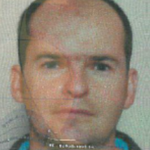 Gérard Leroy
Gérard Leroy
Université du Littorale Côte d’Opale, France
Talk Title: Study of Lithium-Ion battery aging using different electrical measurement methods
Abstract: Rechargeable lithium-ion (Li-ion) batteries are one of the most important sources of energy today. There are different methods and techniques to predict the aging of Li-ion batteries. However, it is still difficult to fully understand aging because it is a very complex phenomenon. This is why, in this work, we will use 3 measurement methods which have the particularity of being non-invasive to characterize the aging of Li-ion button batteries. The first method is complex impedance measurement: it has been used for a long time by many teams around the world. The second method consists of measuring the two characteristic parameters of a battery which are the capacity (in ampere-hours) and the electrical voltage at its terminals in the absence of load resistance. The third method is the measurement of electrochemical noise from the spectral density of voltage noise. To our knowledge, very few studies on aging have used this method. The objective of this study is to obtain additional information to characterize aging in detail.
 Abdelfattah Mahmoud
Abdelfattah Mahmoud
University of Liège, Belgium
Talk Title: A Novel recycling process for Spent Li-ion Batteries
Abstract: The rapid growth of the global lithium-ion battery market poses economic and environmental challenges leading to an increased demand for metal resources. Indeed, the number of spent batteries which are categorized as hazardous and potentially harmful waste has increased dramatically in recent years. Consequently, recycling of spent batteries holds significant importance and emerges as a vital strategy to recover and reintegrate the recovered materials into the battery supply chain. Indeed, recycling of spent Li-ion batteries has attracted a lot of attention because it raises questions about sustainability, resource, and energy security. Recycling mitigates the scarcity of strategic elements used in battery production and reduces associated manufacturing expenses.
Several technologies are used for the recycling of spent Li-ion batteries such as pyrometallurgical, hydrometallurgical, and direct recycling. The concept of direct recycling has has emerged as an innovative and a more sustainable approach because it offers several advantages compared to other traditional recycling processes that require high energy consumption and chemicals utilization. Indeed, direct recycling ensures high recovery rate of cathode active materials while employing simpler processes, compared with traditional recycling processes. In this talk, the current strategies, and emerging technologies in the recycling of spent Li-ion batteries will be discussed. In addition, an efficient, and eco-friendly method for the direct recycling of cathode active materials material will be presented.

